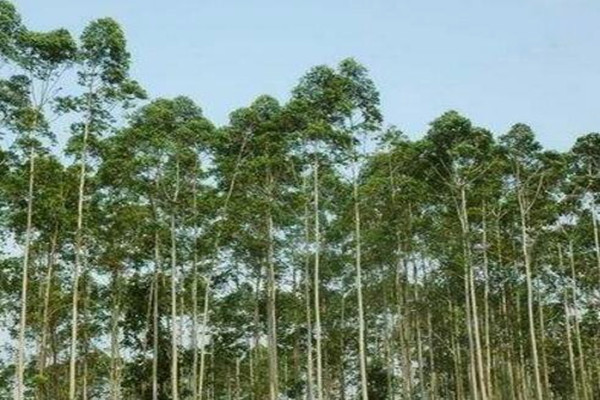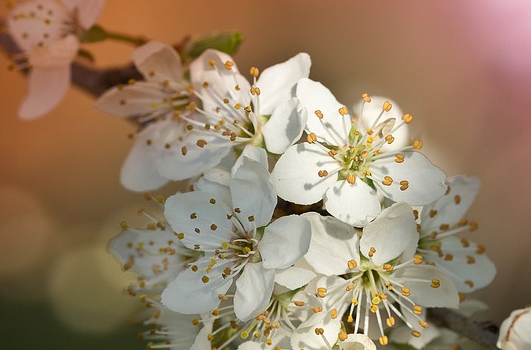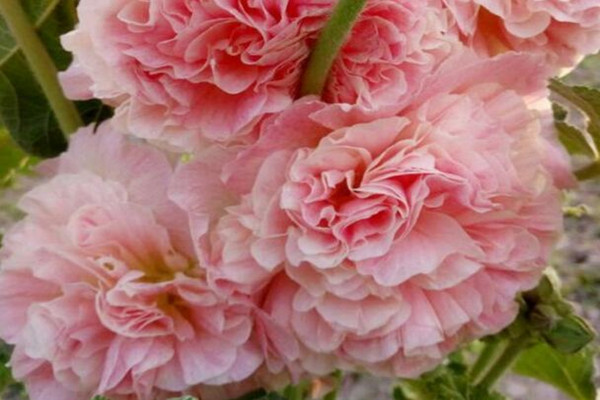What are the effects and effects of lemon eucalyptus? How to plant it? What are the market prospects?
Eucalyptus citriodora originated in Australia and has been introduced into China for nearly a hundred years. South China and Fujian, Zhejiang, Yunnan, Sichuan and other places have cultivated. It is known as the "Forest Fairy." So, what are the effects and effects of lemon? How to grow? What is the market outlook?

What are the effects and functions of lemon eucalyptus?
1. It usually takes 10 - 15 years for the tree to grow into a pillar. This eucalyptus genetic performance is stable, not easy to variety, multi-generation cultivation can still show fast-growing, tall, dry straight, less branches and other excellent characteristics. The yield of wood is higher than 75%, which is not comparable to that of common broadleaf trees. The material is hard, heavy and tough, wear-resistant and corrosion resistant. It is widely used in mining, construction, transportation, papermaking and other aspects, especially shipbuilding.
2. Eucalyptus citriodora is an important fast-growing timber tree and a good aromatic oil tree in South China. Rich in aromatic substances.
3. Mongol has anti-tuberculosis effect, its concentration of 1:1 million can inhibit the growth of human tuberculosis (H37Rv), and its efficacy is equivalent to isoniazid;1:60 can inhibit Staphylococcus aureus;1:6 can inhibit the growth of Mycobacterium phlei. It also has an inhibitory effect on certain fungi, but it is ineffective against E. coli.
How is lemon grown?
1. For seed selection and harvest, the dominant trees with 10-30 years old gray green bark, complete and straight trunk, small taper, no branching, good flowering and fruiting performance, strong resistance to diseases and insect pests, and strong wind resistance should be selected as mother trees. In this way, the breeding ability of lemon eucalyptus is strong, and the flowers bloom once every March to April and November to December, and the flowering period is very long. 9-11 The seeds mature in June and June-July of the following year. After maturity, it does not fall off, does not dehisce, and can be harvested all year round. When ripe, the capsule becomes bottle-shaped, and its appearance changes from light green to dark green to taupe.
The flowering and fruiting period of Eucalyptus citriodora is 10-40 years, 4-7 years after planting. The capsule can be harvested when it changes color from cyan to yellow brown. The seed maturity period is from May to July, and the harvest period is from August to October. Mature fertilized seeds are firm, black and lustrous, with high germination rate and good seed quality. After the seeds are collected, they can be threshed by drying. Generally, the capsule is placed on clean ground or poured on canvas or straw mat. After drying, the capsule can dehisce, and the seeds and shriveled grains fall off. Every evening, the fallen seeds should be collected to prevent ants, rain or excessive sun from affecting germination.
The fruit of lemon eucalyptus sags, and the fruit petals need to be exposed to sunlight for more than 20 hours to fall off. After harvesting, impurities are removed, i.e., seeds are replanted. If it needs to be stored, it can be put into a cloth bag and placed in a dry, cool and ventilated place. The germination rate can be stored for 2 years. Seed germination rate is 3%-4%, seed germination rate is 70%-85%, 1000-grain weight is 4.7 g, and about 200,000 seeds per kilogram.
2. The seedlings grow very fast, the annual seedlings are 2-3 meters high, the main roots are deep, the fibrous roots are few, and the survival rate of afforestation with bare root seedlings is low. Therefore, seedlings should be raised in the nursery first, and then moved into the nursery bag seedlings, with soil uphill, high survival rate. Nursery land requires careful soil preparation for bed, sowing season in addition to winter, can be sown at any time. After the seeds are sown, cover them with soil and water. 4-6 After 7-10 days, the shade shed can be removed. Apply a small amount of fertilizer (150 times urea) every 3-5 days. When the seedlings have 2-3 true leaves, they can be transplanted into the upper bag. A small hole is opened in the seedling bag filled with nutrient soil when the bag is placed, the seedlings are put into the bag for compaction, and the root water is poured. After rooting, fertilize every 5-7 days. To pay attention to seedling and pest control, 50-70 days later, seedlings up to 15-25 cm, you can go up the mountain afforestation.
3. Afforestation conservation density depends on site conditions and management objectives. For example, 3×2 meters or 2×2 meters can be used for the purpose of managing timber forest and good site conditions; 1×1 meter or 1×1.5 meters can be used for the purpose of steaming oil and obtaining small diameter timber; 4×2 meters or 5×2.5 meters can be used for cultivating mother forest; 2×1 meters or 2×1.5 meters can be used for strip afforestation, and the afforestation effect is better. When planting, strip off the seedling bag, squeeze it slightly with nutrient soil and put it into the hole. The soil cover is 1-2 cm deeper than the original seedling root, slightly compacted, and do not trample on the seedling root forcefully. The light transmittance of lemon eucalyptus forest is high, and it can be mixed with broad-leaved trees such as camphor tree and Acacia taiwanensis, and the effect is also good. Thinning is one of the key factors to make timber. Thinning repeated 3-4 years, thinning 2-3 times. After thinning, a certain number of trees are reserved, 70-80 trees in timber forest and 25-30 trees in seed forest.
4. The main pest control diseases and insect pests are termites, red-footed beetle and canker disease, seedling stem rot disease. To control termites, bait can be used to kill adults and disinfect the soil. Seedling stem rot disease, the disease seedlings can be removed and burned, and spray 1:1:100 Bordeaux mixture at the base of the stem of the disease-free seedlings. Red-footed chafers harm young seedlings, larvae can be used before sowing with 2-3 kg trichlorfon powder per mu, mixed with 20-30 kg fine dry soil, evenly scattered on the topsoil, after ploughing the soil larvae killed. For adults harming young forests, 90% trichlorfon or 80% dichlorvos emulsion can be sprayed.
What is the market outlook for lemon?
1. The leaves of lemon eucalyptus have a strong lemon flavor and can be used to extract sesame oil and make soap. Because of its lemon flavor is very strong, mosquitoes and flies dare not approach.
2. The oil content of lemon eucalyptus leaves is 1.5%, which can be extracted from spices and precious medical raw materials. In medicine, it has the effects of antiphlogistic detoxification, dispelling wind and activating blood circulation; it has obvious inhibitory effect on pneumococcus, typhoid bacillus and chlorobacterium; it has special curative effect on stubborn scabies, tinea and scald. Eucalyptus citriodora sapwood is rich in starch, its wood, branches can cultivate white fungus (Tremella), Eucalyptus citriodora flowers twice a year, flowering very long, but also an important nectar source species.
3. Guangdong, Guangxi and southern Fujian have planted, especially in Guangdong most common, mostly for street trees, like wet and fertile soil; tolerant of light frost, in northern Guangdong and Fujian grow well. Wood texture is straight, easy to process, slightly brittle, after cutting by water immersion, can improve the resistance to pests and borers; used for shipbuilding; resistant to seawater immersion, can prevent ship maggots attached corrosion, is a good wood for shipbuilding; leaves can be distilled according to oil, for spices, branches and leaves oil content of 0.8%, mostly citral, there are a small amount of vinegar and alcohols, crude oil proportion at 15℃ is 0.864, refractive index at 20℃ is 1.4594. The planting market has broad prospects.
Time: 2019-03-22 Click:
- Prev

When do pear trees usually blossom? What are the commonly used grafting rootstocks?
Pear is a perennial deciduous fruit tree of Rosaceae, which is widely distributed all over the world. Pear fruit is edible and has high nutritional and medicinal value. When do pear trees usually blossom? What are the commonly used grafting rootstocks? When do pear trees usually blossom? Due to the wide distribution of pear trees
- Next

When does hollyhock blossom? How to plant it? What are the effects and effects?
Hollyhock, also known as Yizhang Hong, big Shu season, military sunflower. Originated in Sichuan, China, it is widely distributed in China, including East China, Central China and North China. It is cultivated all over the world for ornamental use. So, when does hollyhock blossom? How to plant it? What are the effects and effects? When does hollyhock blossom? As it originated in Sichuan, China
Related
- Fuxing push coffee new agricultural production and marketing class: lack of small-scale processing plants
- Jujube rice field leisure farm deep ploughing Yilan for five years to create a space for organic food and play
- Nongyu Farm-A trial of organic papaya for brave women with advanced technology
- Four points for attention in the prevention and control of diseases and insect pests of edible fungi
- How to add nutrient solution to Edible Fungi
- Is there any good way to control edible fungus mites?
- Open Inoculation Technology of Edible Fungi
- Is there any clever way to use fertilizer for edible fungus in winter?
- What agents are used to kill the pathogens of edible fungi in the mushroom shed?
- Rapid drying of Edible Fungi

